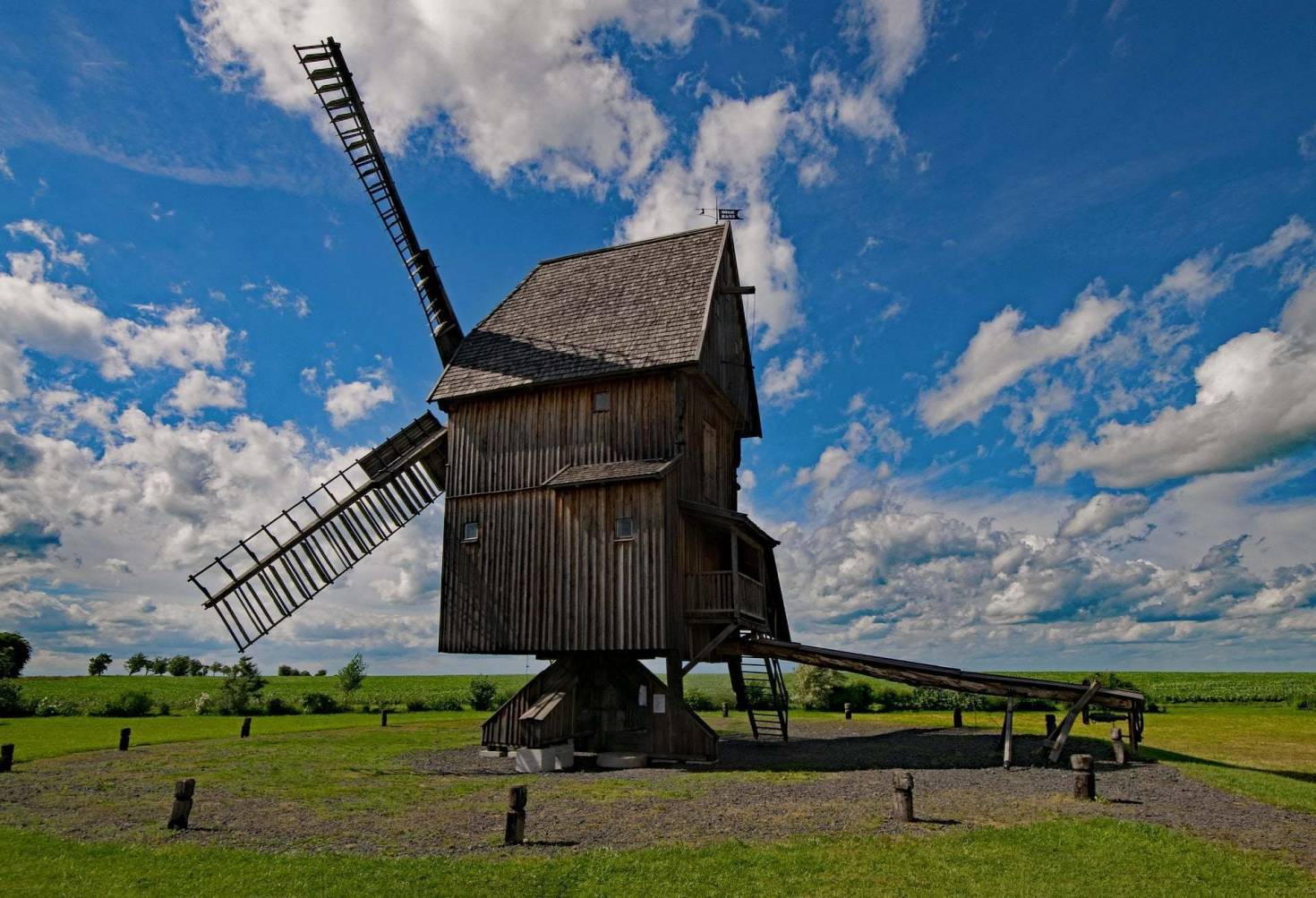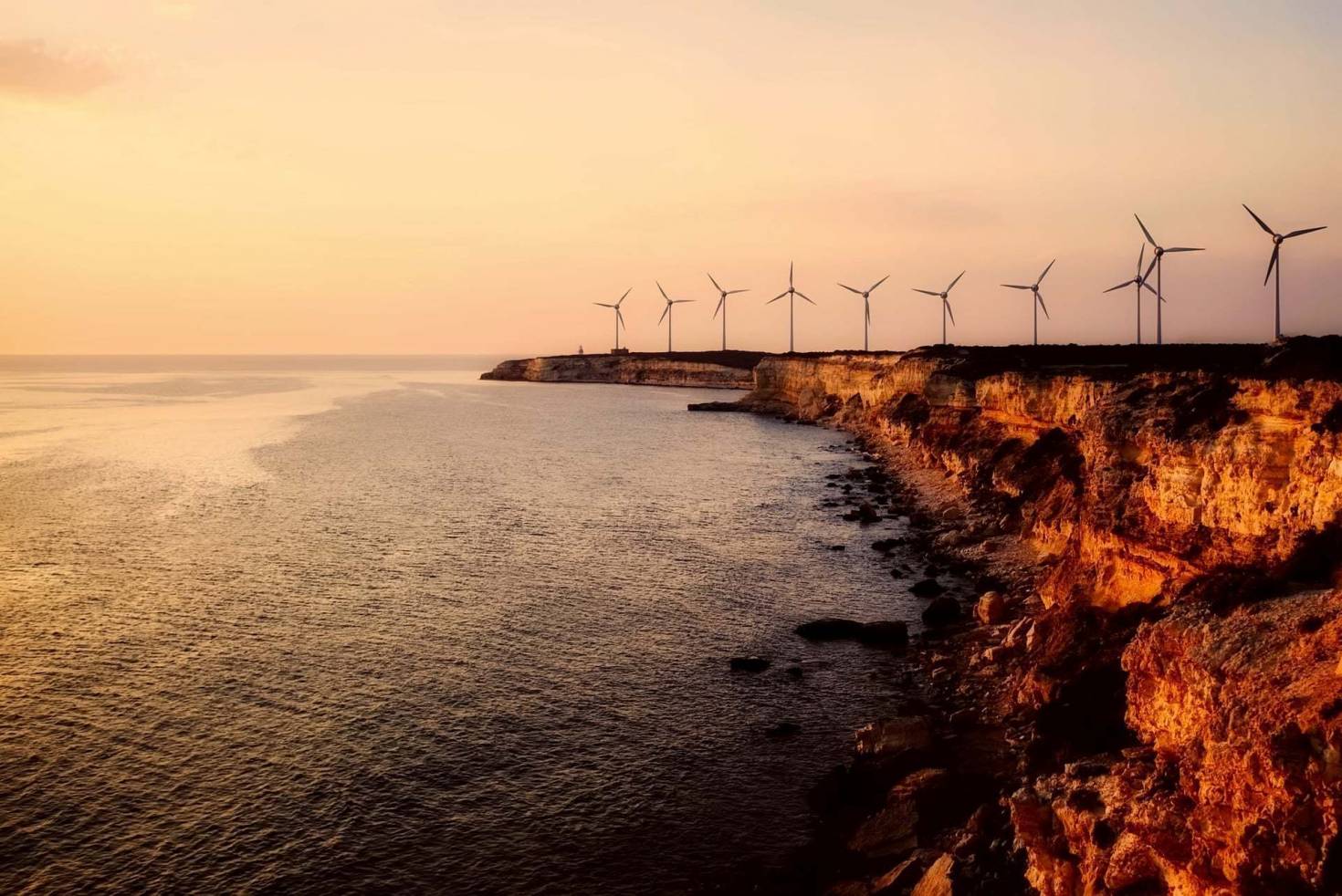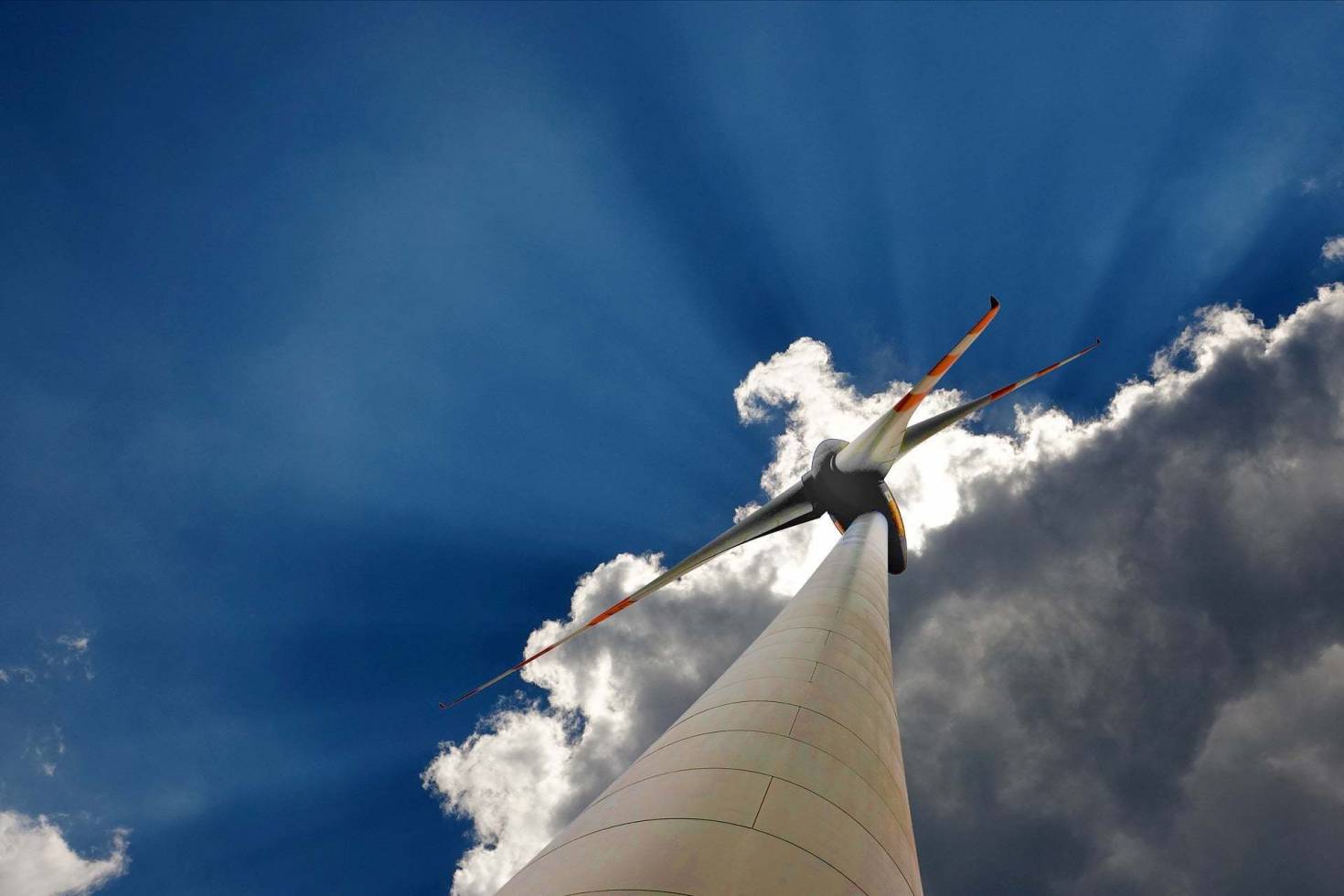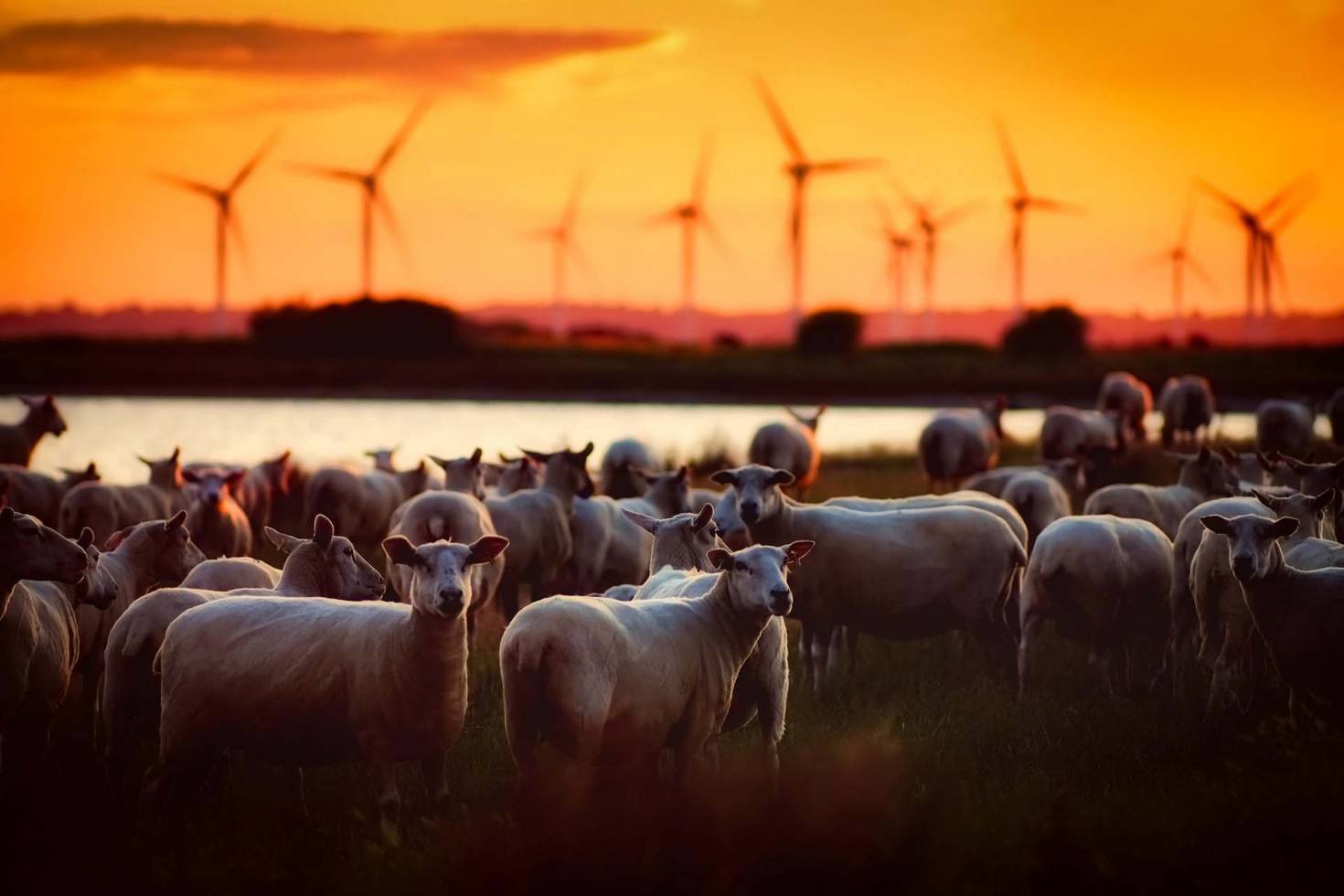Did you know you it’s possible to make money “out of thin air” simply from the wind? More and more people are starting to realize they can take advantage of this valuable, renewable resource. Windmills, wind turbines, and wind farms are popping up throughout the United States and all over the world. People in many areas of the country are buying land for sale, setting up a wind farm, and reaping some bigtime benefits and making legitimate money as a result.
People have been harnessing the energy of the wind for thousands of years. Boats traveling along the Nile River were propelled by the wind as early as 5000 B.C. and around 200 B.C., Chinese windmills were pumping water, while windmills were grinding grain in Persia and the Middle East. American settlers used windmills to grind corn, pump water, and cut wood at sawmills. When electric power was discovered, they started using wind power to generate electricity for homes and businesses. Soon shortages and blood spill over oil caused people to start searching for alternative energy sources. It provided the opportunity for wind power to make a comeback and become an increasingly popular option.

These countries lead the world in wind-power capacity measured in MW as of 2020 according to Wikipedia.
- 281,993China
- 117,744United States
- 62,184Germany
- 38,559India
- 27,089Spain
Before you decide wind farming is the perfect idea for you and start making investments, it’s important to be clear on what type of land it takes to create a successful wind farm.
Land considerations for a wind farm
How windy is it?
It may go without saying but since it’s indispensable it should be said anyway. To sustain a successful wind farm, your going to need some wind. The question is… how much and does your land fit the bill?
Wind is a renewable resource, but since it comes from the uneven warming of the earth, it's somewhat unpredictable. However, certain areas are consistently windier than others. There are tools available that can help to research these areas and specifically the wind on your land. Wind farm developers say the average wind speed needs to be around 6-9 mph, but usually the windier the better. The more wind there is, the more mechanical energy can be produced. In turn, this produces more electricity and puts more money in your pocket.

The highest average wind speeds are generally found on sea coasts, ridgelines, and on the Great Plains, but there are many areas that have wind speeds high enough to power a wind turbine. The U.S. department of energy provides state wind maps that can be helpful to get a general idea of wind speeds at certain heights. The National Oceanic and Atmospheric Administration has made national wind maps available and according to their data, these are the windiest places in the United States measured in miles per hour.
- Mt. Washington, NH - 35.6
- Cold Bay, AK - 16.1
- St. Paul Island, AK - 15.5
- Lihue, HI - 13.3
- Dodge City, KS - 13.1
- Kahului, HI - 12.9
- Amarillo, TX - 12.8
- Barrow, AK - 12.6
- Cheyenne, WY - 12.3
- Rochester, MN - 12.2
Developers and scientists can use anemometers and other instruments to accurately measure wind speeds over specific periods of time. Any developer looking to create a wind farm will do research beforehand to make sure the appropriate wind speeds exist to produce the desired result.
What size is it?
There’s not one exact layout for a wind farm that has been agreed upon since wind turbines come in different sizes and the production targets vary. The point to remember is to be certain the area is big enough to handle the number of turbines you're planning on installing. For example, offshore islands for sale can be very windy but need to be big enough to support your project. Artificial islands are even starting to be built for wind farms.
The question of how much spacing is required between turbines to produce the maximum output has not been fully answered, but a wind turbine spacing study by Charles Meneveau, a Johns Hopkins University fluid mechanics and turbulence expert, provided some interesting insight. Usually, turbines are used with rotor diameters of approximately 300 feet, and are spaced about 7 rotor diameters apart, or around 2,100 feet (over a third of a mile). The study suggests placing the turbines 15 rotor diameters, or 4,500 feet, results in more cost-efficient power generation. In 2016, the average rotor diameter was 324 feet while the average hub height was 249 feet.

Although there are several variables at play, a wise strategy is to look at examples of success and mimic or improve on them. Take a look at what’s working. Here are a few of the largest onshore wind farms in the U.S by generating capacity in megawatts.
- Alta Wind Energy Center in Mojave, CA - 1,548
- Los Vientos Wind Farm near Rio Grande, TX - 912
- Shepherds Flat Wind Farm near Arlington, OR - 845
- Meadow Lake Wind Farm in Chalmers, IN - 801
- Roscoe Wind Farm in Roscoe, TX - 781.5
The largest wind farm in the world is the Gansu Wind Farm near Jiuquan, China with a capacity of 7,965 MW and has a target capacity of 20,000 MW with an estimated cost of $120 billion.
Is there access to a power grid?
For the energy produced by a wind farm to be worth anything, it needs to be able to get where it needs to go to be consumed. The land needs to be placed close enough to a power grid so that it can be transferred out and used by communities or businesses. Energy technology has come a long way and has made it possible to be larger distances away from grids to successfully transfer energy. Even still, access to transmission is essential, so make sure your land is within the suitable distance. Having telephone poles and power lines installed can be very expensive.
Is there vehicle access?
Wind farms require significant construction, installation, and maintenance. A good site location for a wind farm will need to have some type of road access so vehicles and materials are capable of getting there. In many cases, oversized loads will be coming through, because turbines are large and heavy. Hopefully, the route doesn’t include sharp turns, weak bridges, or narrow pathways.
How close is it to neighbors and possible obstructions?
Hopefully, one of the principles you live by is to be considerate of others. Wind turbines have a tendency to be noisy (although this has been reduced with advances in technology) and not very aesthetically pleasing. This could be bothersome to any nearby neighbors. Sure, it’s your land and you can do what you want with it (within the law), but the respectful thing to do is run it by them and see how they feel about it before you take actions that might have a negative impact on them.

Another necessary quality of a good wind farm site is there shouldn’t be any obstructions. Obviously, wind traveling at an average speed doesn’t go through things very well. If the site is free of any nearby homes, buildings, power lines, trees, or any other obstacles that could be a hindrance to the wind, it might be a good location for a wind farm.
How is it zoned?
You might be surprised at how many people don’t do the appropriate due diligence before they buy property or start projects. To know if your land makes sense for a wind turbine, you’ll need to make sure the zoning laws allow for it. If the zoning in your area doesn't allow high towers, you'll need to obtain a special permit from your local planning commission. Some areas have wind energy ordinances that grant permission to install wind turbines. You’ll also need to be aware of the type of permitting required to install the turbines. All this information can be found by contacting the local authorities that govern the area the land is located in. If you’re interested, you can learn more about wind energy permitting and zoning from WindExchange. To find out more about land usage in general, head over to our blog discussing land uses and land types.
What’s the topography like?
Terrain is an important aspect of a property for a potential wind farm. Is your land steep and hilly, or is it relatively flat and steady? Ideally, it’s at least somewhat level or if not, the slopes are gradual. Even if it’s located at a high elevation, this is fine (sometimes much better even) as long as it meets these qualifications.
Are there negative environmental implications?
Sticking with the concept of being considerate, any outdoor project should take into account how it will affect the environment, whether it’s the land, vegetation, or wildlife. The American Bird Conservancy estimates there are hundreds of thousands of birds killed annually by accidentally colliding with turbine blades, and that it’s possible the real number could be in the millions. Turbine siting should be strategically away from any major migratory bird routes or breeding areas. The goal should be not to risk disrupting any ecosystems. The American Wind Wildlife Institute provides a database of publicly available literature and reports related to wind energy and wildlife in North America.
Is wind energy the most profitable use for the land?
The last consideration should play a role in every project or major decision. Before you jump into something new, make sure to crunch the numbers. Wind farm costs vary widely depending on a large number of variables, but it’s important to figure out an estimate of what it’s going to cost you, and how much money it’ll provide you with. Would doing something else with the land ultimately supply you with a better net result? It would be a shame not to consider this before you pull the trigger or wind up in a dilemma you weren't ready for. One of the biggest mistakes people make is going in unprepared.

Living considerations for a wind farm
How much does it cost?
According to SolarReviews, the purchase and installation of a system large enough to power an entire home costs, on average, $20,000, but ranges from $10,000 to $70,000 depending on size, height, and installation expenses. The purchase and installation of very small 1-kW turbines cost around $4,000 to $9,000, and a 100-kW turbine can cost up to $350,000. Commercial turbines can cost $1.3-$2.2 million per MW capacity installed. So a turbine capable of producing 2MW would range from $2.6 million to $4.4 million.
Can you lease it to a developer?
If your land type is suitable and you want to profit from wind energy without doing the work, you can lease your land to a wind developer. A developer will take care of researching the wind speeds, designing the best positioning and spacing for the turbines, constructing the turbines, maintaining the project, and returning your land back to its original state when the project is completed. You can sit back and enjoy receiving a check for around $5,000 per MW, or $8,000-$10,000 for every 2 MW turbine. United States wind farms pay state and local governments and private landowners over $1 billion each year.
Believe it or not, in some states it’s legal to severe the wind rights from the property rights. In California, a state court decided that wind rights can be severed from the land. In South Dakota, there is a statute that prohibits severing the wind rights. In many states, the issue hasn't been addressed yet.
The fuel is clean, free and sustainable
One of the great things about using air as an energy source is that unlike oil and other fossil fuels, it’s a renewable resource, which means it will never run out. This concept not only contributes to peoples' peace of mind, but supports stable prices. Again, this is completely different from oil-a resource that wars are being fought over and pricing is anyone’s guess.
Wind energy is a clean, green, non-polluting form of energy. Landowners who take advantage of it can feel good they’re contributing to their community and the environment. Best of all, although wind turbines cost a significant amount of money, the fuel is completely free and can produce your own personal electricity.
Can you use the land for something else at the same time?
Wind turbines may require a large amount of land, but the turbine itself doesn’t take up much of the actual surface area. This means you can use the same tract of land for multiple purposes. If it's agricultural land, the space in between the turbines may be perfect for livestock to continue to graze unharmed. Crops can be grown but the turbines would alter the rows and any type of agricultural aviation like crop dusting would be affected.

The wind energy industry is growing every year. According to the American Clean Power, the wind industry added 9,143 MW of new wind capacity in 2019, the 3rd strongest year ever for installations, and has more than tripled over the past decade, becoming the nation’s largest source of renewable generating capacity. Since there are nearly 60,000 turbines with a capacity of almost 105,583 MW, 120,000 jobs are created and supported with Texas leading the way at over 25,000. Wind energy was responsible for 6.5% of the United States’ electricity in 2018, enough to power 26 million homes and avoid 201 million metric tons of carbon dioxide emissions.
Many people don't know what a landman is, but those that do think of them as being involved in the oil and gas industry. A less talked about industry that landmen are involved in is the wind industry. Wind development requires services such as ownership research, securing sites, and negotiating surface and wind right agreements. If you're interested in learning more take a look at what is a landman?
The key to whether or not your land would make a successful wind farm is to do the appropriate research. If there are already wind turbines located near your property, that’s a good sign. If your current property doesn’t necessarily make sense for a wind farm but you’re interested in finding a tract that does, check out our agricultural land for sale or our agricultural land for auction. If you’re a wind developer not looking to buy, our agricultural leases might be more suitable for you. Or of you just want more information on the land buying process, head over to our land buying guide. Either way, if you can check the boxes mentioned above, chances are you’re in good shape to start creating some substantial passive income through wind power, as well as contributing to a cleaner environment.

